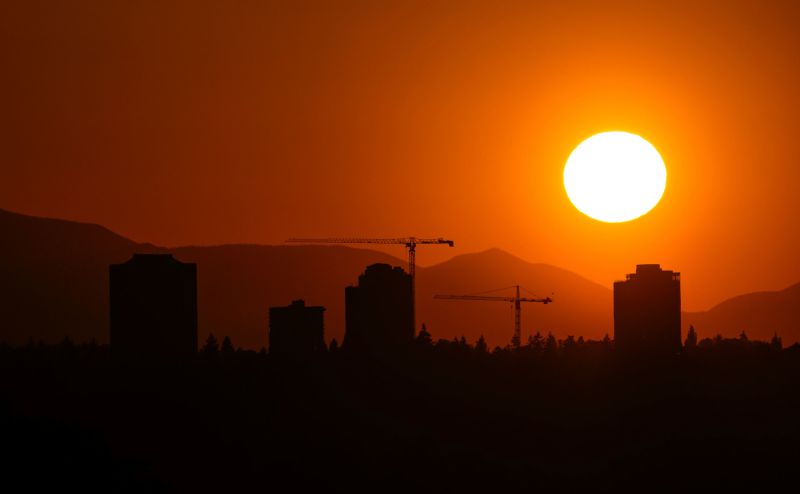
Record-breaking heat scorches the western US and Canada as wildfires continue to rage
The West has taken a dive straight into summer, with temperatures well above those normally seen even at the end of July. Record-breaking temperatures and a heat wave will continue to grip the entire region through much of this week.
Yesterday, several locations across the Pacific Northwest broke daily high temperature records:
“Today will be the 4th day in a row with highs in the 80s for Seattle,” the National Weather Service office in Seattle said. “This will tie the record for most consecutive days with highs 80 degrees plus in the month of May.”
For reference, Seattle’s normal high at the end of July is around 79 degrees, so temperatures are well above even the normal highs seen in the dog days of summer.
Many people in the Pacific Northwest do not have air conditioning, and with overnight lows running warm as well, the body is not able to easily recover from the daytime heat. It has prompted heat alerts for more than 10 million people across the Pacific Northwest and portions of Central California.
The weather setup very much resembles a weather pattern seen in the middle of summer for the region. A big dome of high pressure is sitting over the Northwest, allowing dry, downslope winds to come off the mountains, spiking temperatures well above average.
As the heat continues to build this week, nearly 150 high temperature records will be in jeopardy across the West.
While the heat will spread farther east throughout the week to include the Rockies and central and southern Plains, the most dramatic heat will be in the West. Temperatures are running 20 to 30 degrees above normal across the Pacific Northwest.
“To put it in perspective, highs will be near record values each day,” the weather service in Boise, Idaho, said. “These hot temperatures will increase snowmelt in the mountains. Mainstream rivers fed by snowpack will be running high, swift and cold.”
Weather service offices all across the West are urging people to stay out of the water and find relief from the heat in other ways. Water temperatures are in the 50s for the most part, cold enough to cause cold water shock and hyperthermia.
This heat is not just affecting the US. It has been even more extreme across western portions of Canada.
Several cities across British Columbia set new monthly records Sunday, including Lytton, which topped out around 97 degrees; hotter than the average temperature Phoenix, Arizona, experiences around this time of year.
Environment Canada has issued heat warnings for northern portions of Alberta and portions of British Columbia, where high temperatures are forecast to reach the mid 80s. Temperatures here are running 15 to 25 degrees above normal, so the weather agency is urging people to cancel outdoor plans if they aren’t necessary, as heat-related illnesses are possible.
One bit of good news is, “While the developing heat may result in daily temperature records being broken, it must be emphasized that the expected hot conditions will not approach those reached during the ‘Heat Dome’ of late June 2021,” Environment Canada said.
The heat is also having a huge effect on Canada’s active start to the fire season. There are currently 89 fires burning in Alberta alone, where fires have scorched 1.3 million acres so far this year. It puts 2023 as the fifth-busiest fire season on record in Alberta, and we still have several months of fire season yet to go.
While the hottest temperatures may have peaked over the weekend, the long-range outlook looks to remain quite warm for the Northwest.
Atlantic hurricane season begins June 1, but weather does not always follow the calendar and forecasters are already monitoring a system in the Atlantic this week.
